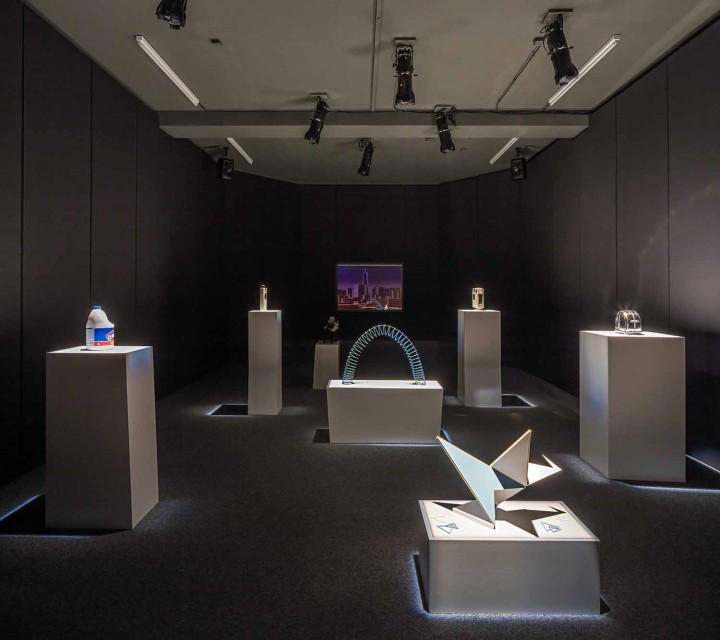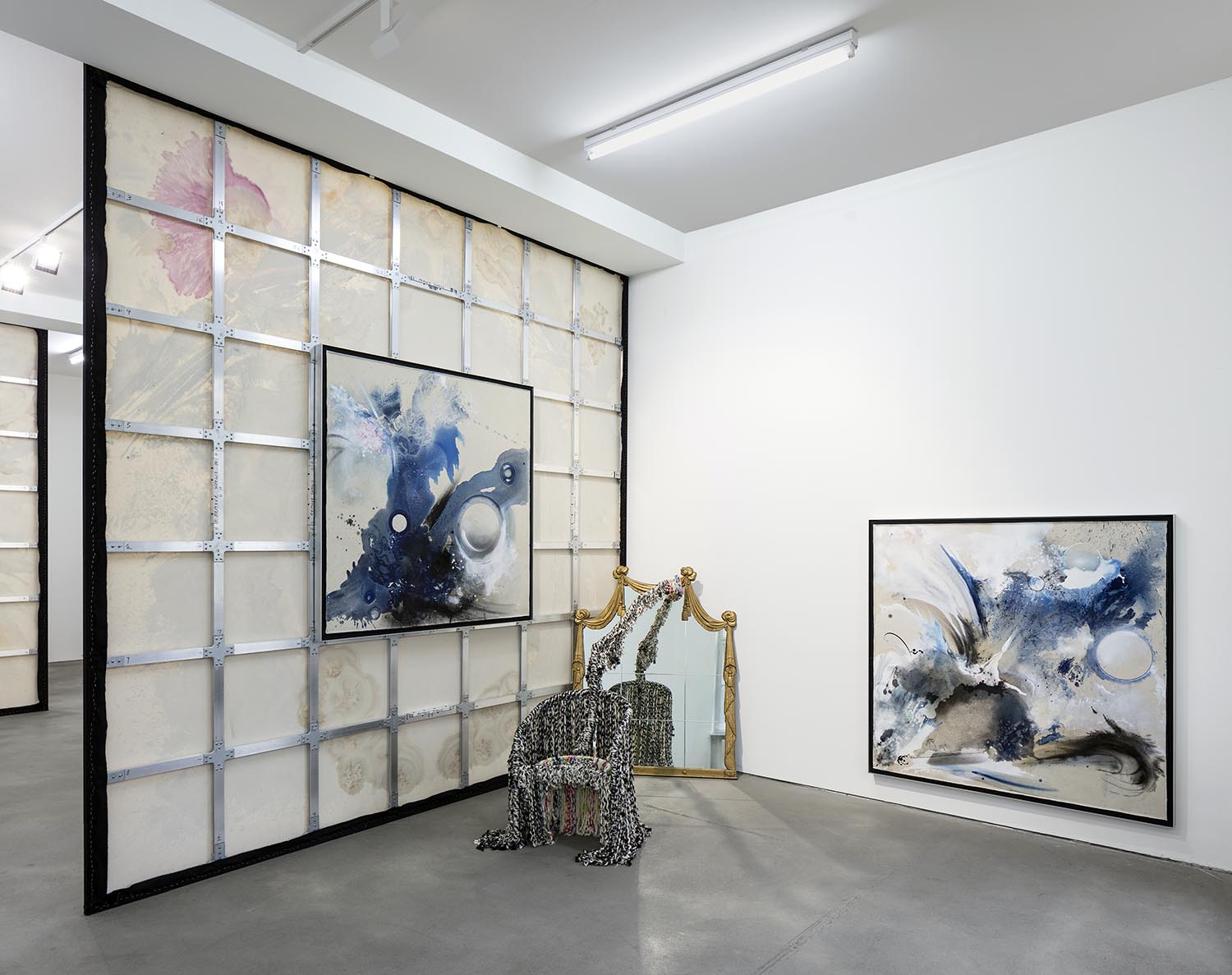Against the deafening background noise that accompanies the 9th Berlin Biennale, it is good to know that there’s a place where one can seek refuge and regain one’s center.
It’s on the top floor of Sprüth Magers, and it’s like Plato’s cave. You are invited to take a seat, relax, and watch the shadows converse in Alexandre Singh’s most recent project — only his shadows are a rather whimsical selection of objects on plinths: a toaster, a slinky toy, two tape players, a bottle of bleach, a sharp-edged abstract sculpture, a stuffed skunk. As soon as this unlikely ensemble of objects starts to talk, the cave turns into a full-fledged theater, with bright spotlights illuminating each individual “performer.” At that point the setting becomes clear and the objects assume individual identities: the tape recorders impersonate art critics, the slinky toy is the host, the sculpture is an aspiring artist from the Midwest, and so on. Their distinctive accents and sophisticated vocabularies suggest well-educated, progressive, middle-class art aficionados. However, their conversation never touches upon current events or notions of social engagement, but remain within the realm of self-referential witticisms.
Singh’s piece is based on French dramatist Molière’s 1663 play The School for Wives Criticized — a sarcastic response to the shallow criticism the playwright received for his drama The School for Wives of the previous year. One character criticizes the critics: “It is very strange that you writers always condemn the plays which every one goes to see, and never speak well of any except those which fail.” In Singh’s piece it is impossible not to note a critique of not only the critics, but the art audience as a whole — or, probably more to the point, a culture of thinking and talking about art, but not acting upon it.



